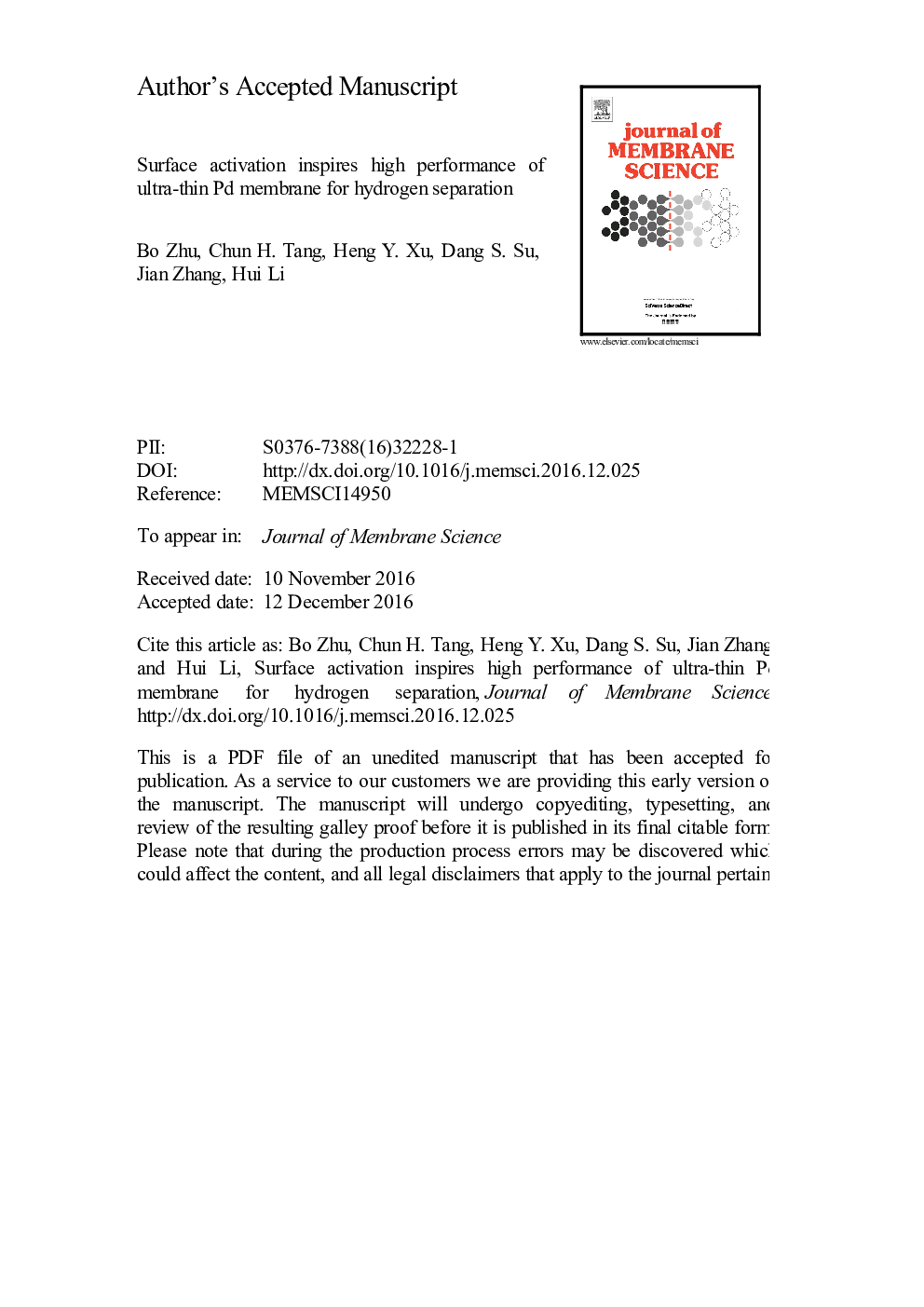| Article ID | Journal | Published Year | Pages | File Type |
|---|---|---|---|---|
| 4989107 | Journal of Membrane Science | 2017 | 17 Pages |
Abstract
Pd-based membranes play a critical role in the field of hydrogen purification and small-scale hydrogen generation. The microstructure and composition of ultra-thin Pd membranes immediately determines their performance and stability, which are however complex and elusive. We applied for the first time a novel technique of environmental scanning electron microscopy (ESEM) together with EDS analysis for in-situ investigation of microstructure and composition of Pd composite membranes under gas-thermal treatment. It enables step by step analysis of the evolution process and offers more meticulous details compared to ex-situ technologies through analysis at exactly the same location of membrane samples. Here we observed the elimination of Pd crystallites as well as the homogenization/diffusion along the whole membrane surface following high T treatment under inert gas or H2 atmosphere. Gradual evolution of microhillocks on Pd membrane surface was resulted due to αâβ phase transition or exposure to either O2 or H2O, which can be effectively “smoothened” out during H2 treatment. The exposure to steam exhibited a mild oxidation effect without pinhole formations, which appears a more appropriate surface cleaning process compared to air/oxygen treatment. A significant interlayer diffusion was revealed between Pd layer and ZrO2/alumina substrate in H2/O2/H2O atmosphere.
Keywords
Related Topics
Physical Sciences and Engineering
Chemical Engineering
Filtration and Separation
Authors
Bo Zhu, Chun H. Tang, Heng Y. Xu, Dang S. Su, Jian Zhang, Hui Li,
